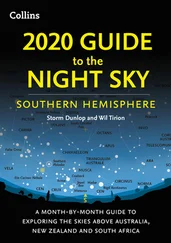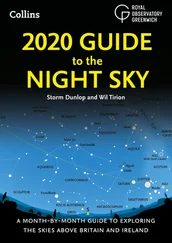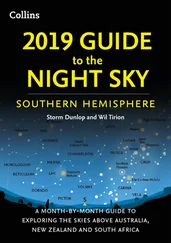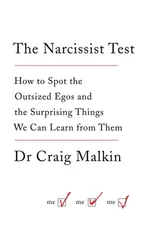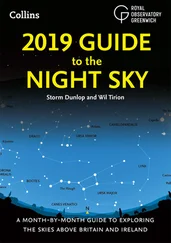Never once had she felt the desire to hit the machine, to jostle it, berate it. But she had considered what it would feel like to slide it gently into the water, where the two rivers of Pittsburgh converged, then jump in after it. She would ride it down to the sea, like a barrel over the falls. Then, sleeping peacefully, they would drift out on the waves. These things had occurred to her. She had stood for panting, tense minutes at the railing of the George Westinghouse Bridge, glaring down at the train tracks below, flanked by green, thinking of jumping.
In Toledo, her mother was finally dying, and one last breath came out. Irene did not know the fight her mother was having, right at that exact moment.
Outside Pittsburgh, there was a green forest to hike in, with rivers and bald eagles. Inside the city, there were buildings you could look at, visit, and enjoy. A funicular went up and down, up and down, but Irene had never been in it. Irene didn’t care about all that. She just leaned over the experiment, her back bent. There are elements common to all cities. University laboratories, suicide bridges, small apartments to live in, boyfriends to have.
Irene kept her face steady, her eyes open, pointed at the machine. If she worked until her face melted into the detector, if her brain fell down into the path of the accelerator, if it was penetrated by pions and if a small black hole was created in her skull, then at least she would have finished all the data for this set. She blinked her eyes to wake herself up, clicked the knob, and peered into the machine, like every time before. But her mother had nothing left with which to blink herself awake. She could not stop.
Far away, her mother died.
And this time, when Irene looked into that little window, she saw something completely different. This time, even before her forehead pressed against the humming steel, she saw a tiny purple glow. A little bit of light came out the window she had been looking in. Light that had not been there before.
Her stomach dropped. Her brain woke up. She took a deep breath in, and she felt her heart tremble and thump against her ribs. The lab was perfectly quiet, a heavy door blocking out any sounds of the hallway. There was no window and no potted plant, no ticking clock, no stars marching across the firmament, no heavenly witnesses. Irene sat frozen, vibrating, the purple glow from the apparatus window lighting up her eyes. At that moment, she almost couldn’t look. It was too much to take.
As the person who had been standing in the upstairs hallway in her mother’s house came slowly down the stairs, step by step, toward the body, Irene pressed her face up to the experiment one final time in faith, opened her eyes wide, and stared at the evidence.
For the first time, it was there. More beautiful than she had ever imagined. A tiny pinprick in space, absorbing and draining particles, leaking radiation that came to her as light through the detector she had made. It flared up from a deep violet to the fiercest lavender and back again, the size of a speck of dust, as far as her human eye could tell. Her breath came faster. Her eyes did not want to pull away, did not want to leave the window, and the purple light bathed the sharp lines of her face, her pointed chin, tired eyelids, the pencil forgotten in her ear. Her finger pushed a button and recorded an image. Another image.
Then in a mist of lavender, it was gone. She blinked. Her heart surged and hurt against the back of her sternum. She felt prickles of adrenaline rippling down her limbs. Her hand reached into her lap and fished around in her lab coat, picked up a pencil. The hand felt the distance between the coils and the other edge of the notebook, felt its way halfway down the page, and then while her face was still glued to the machine, she wrote.
Irradiated Argon. Polarization 60%. Frequency 16 PHz. Wavelength 47nm. Visible Hawking radiation from possible black hole. Estimated mass, 1 ng. Estimated radius of anomaly, 0 nm. Estimated density, infinite. Halflife
She stopped writing. Had it lived for two breaths? Three seconds? Had she been watching for an hour? She leaned back over the machine and looked into the detector. The particles continued to whirr through the collider. Soon, there would be another one. Now she had no trouble staying awake.
One hour passed. Two hours more, and she was still looking. She saw one more, two more, but it was not enough for her. She was hungry for these results. Just one more, her brain said. Show me one more. Then I’ll sleep. “More gas,” her hand now wrote. A purer substrate. Try protons, for a perfect leptonic decay. The color of irises in spring.
When she finally pulled away from the machine, a visor shape was marked into the pale skin of her face by the pressure of her observation. She waved her hand through the air in front of her body and smiled.
Black holes had formed and decayed, without taking the universe or even Pittsburgh with them. Each left a puff of radiation, just like it was supposed to, and then was gone. A leak of energy that could be measured, documented, graphed, applied to paper, faxed, e-mailed, and reported to the world. The smallest collision, the smallest suction of mass into a singularity, the quickest fade, the sweetest moment of bright purple light in dissolution, like a shallow breath let out quickly. Because of her design, it had been visible. She had seen X-rays it emitted, like no one else on earth had ever done. All around the earth in space, these tiny collisions were happening all the time. Matter rippling like a puddle in a rainstorm. Irene felt better than she had ever felt in her entire life. If she had known a song, she might have sung it. If there had been someone there, she probably would have spoken to them in an elevated tone. She might have even let that person clasp her hand in congratulations.
Her phone rang.
She walked on stiff legs to her desk and picked up the phone from where she had set it down what seemed like years ago. A glance at the time surprised her. So much of it had passed. She slid the phone on and clicked to answer.
“Sparks,” she said.
Irene was a small girl with a face like a trapezoid. Her smile, when it appeared, could have been called winning, but her voice was not charming. It grated, and was not pretty. At times, she cultivated this ugliness. She tried for a caustic manner. Small women have to do this, she had told herself often. It’s bad enough I have to be short. At least I don’t have to be cute.
“Irene? Is that you?” The voice on the phone had the unmistakable buttery tone of her mother’s pastor.
“Hello, Father Allen,” said Irene. Why was he calling? She had not talked to him since the last time her mother had an episode. Inside her happiness, a tiny speck of doubt took hold, spiraled around, and sent a plume of anxiety through her body.
“Honey,” said Blake Allen, his voice sounding like a waterfall of olive oil. “Are you alone? Are you with someone?”
“Yes.” She walked back over to the machine and leaned her face on the metal. It was cool on her forehead. She felt her breath start to come out fast. She felt the blood coursing through the arteries in her head. Something deep inside her chest sent out a little pain. Something bad was about to happen.
“Okay, Irene, I’m with your mom.”
“Where is she?”
“She’s here at home, Irene. I’m at her home right now, and I’m sorry, but she has passed away.”
“What? What are you talking about?” This was not what Irene had expected him to say. Passed out, maybe. Past hope. But not away.
“I’m so, so sorry, Irene. I hate to have to tell you this. But she has passed.”
“Where is she? Where are you?” Irene’s voice scraped along her throat, tears starting up in her eyes.
Читать дальше





